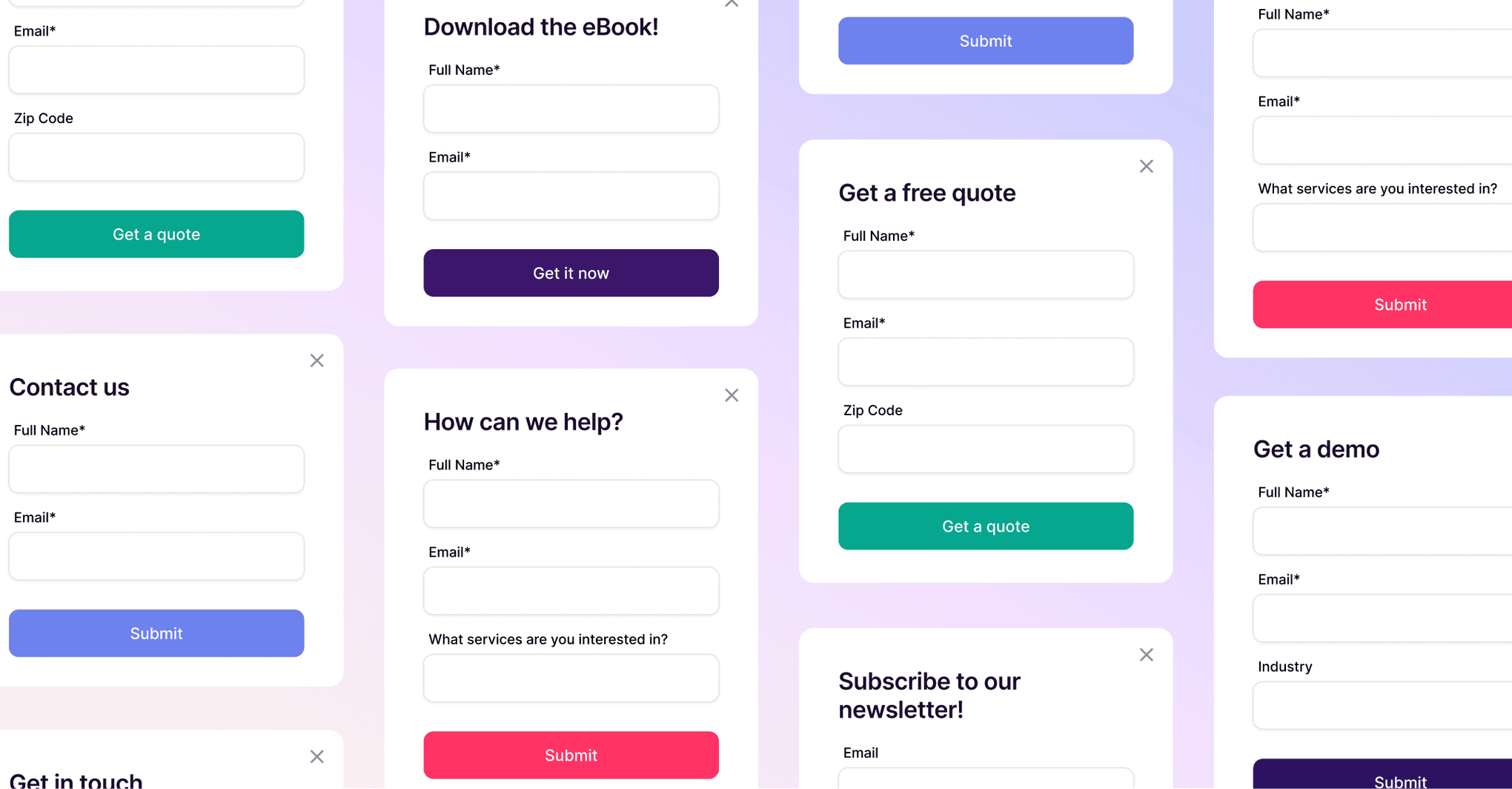Jemicah Marasigan
Content Marketing Manager
Every agency knows the moment. A client sends over feedback that makes your design team pause mid-scroll. “Can we make the logo pop more?” “What if we add a few more fonts for variety?” “Let’s just put all the copy in the hero section so people don’t miss anything.”
Sound familiar?
And sometimes, it’s not that clients give confusing feedback, it’s that they don’t give any feedback at all.
You share the final design, ready for review, and they simply respond, “Looks great!” Then two weeks later, new opinions surface once the project is live. It’s not apathy. It’s uncertainty. They don’t always know how to evaluate design or what to look for, so silence feels safer than saying the wrong thing.
And that’s okay. Clients don’t need to be design experts. What they do need is a partner who can translate their ideas into something that works.
Whether your agency is focused on design, marketing, or even web dev, helping clients understand design and content isn’t about lecturing or proving your expertise. It’s about empathy, structure, and storytelling — showing them why good design decisions matter in ways they actually understand.
Why clients struggle with design and content principles
For most clients, design looks intuitive. They interact with polished websites, scroll past sleek ads, and assume creative work “just happens.” They rarely see the hundred small choices behind the scenes — the color balance that draws the eye, the copy rhythm that keeps attention, or the spacing that gives a layout room to breathe.
But here’s the thing: clients aren’t ignoring your expertise, they just don’t have the frame of reference you do. Their exposure to design comes from what they say day-to-day: competitor sites, social ads, and probably a Canva template or two. So, when they review your work, it’s more about familiarity and not functionality. And sometimes, clients may hestitate to even give feedback at all, because they’re worried they’ll sound uninformed or “wrong.”
As agencies, we have to remember when they give feedback, they’re trying to help:
“Make it pop” might really mean “I want this to feel more energetic.”
“It looks too empty” might mean “I’m worried our message isn’t coming across.”
Your job isn’t to push back — it’s to decode. Ask questions that surface intent, like: “What about it doesn’t feel quite right yet?” or “What do you want people to feel when they see this?” Those questions turn frustration into clarity.
Adrienne Folse, founder of Design the Planet, has spent years helping clients navigate that gap. She says she rarely takes surface-level requests at face value. “When a client asks for a small logo change,” she explains, “I pause and ask why. Nine times out of ten, the real issue is bigger — maybe the brand’s visuals don’t reflect how they’ve evolved.”
Don’t rush to adjust the design. Start by mapping out what the client actually means. Keep a “translation key” of common phrases — for example, when a client says “fun,” it might mean brighter colors or looser imagery. Documenting patterns like this helps your team decode faster next time.
1. Your agency’s superpower is your ability to translate
A lot really does get lost in translation between “creative speak” and “client speak.”
Words like negative space, visual hierarchy, or typography weight are second nature to you — but to a client, they can sound like code. Your real superpower isn’t just making great design; it’s translating those abstract choices into plain, purposeful language that connects to business goals.
Instead of saying, “We need more contrast to fix the hierarchy,” try, “Let’s make your main offer stand out first so visitors know what to do.” That shift turns design theory into results.
1. Make the abstract visible
When words don’t land, show what you mean. Pull up two versions of a layout — one cluttered, one with breathing room — and ask which feels clearer. Use quick mockups or color swaps during meetings to demonstrate how design changes affect emotion or focus. When clients can see it, they get it.
And if your client doesn’t know what “good” looks like yet, that’s okay too. Don’t ask for opinions on taste — ask for reactions to outcomes. Instead of “Do you like this?” try “Does this feel aligned with how you want customers to perceive your brand?” It shifts the conversation from aesthetic taste to strategic intent.
2. Mirror their language
If a client says “make it pop,” don’t correct them — mirror them. Ask, “When you say pop, are you thinking brighter colors, more movement, or more energy?” Meeting them where they are builds trust and helps them articulate what they actually want.
Greg Cox, founder of WebPilot, believes this kind of translation is essential.
“There’s no single ‘right’ version of good design,” he says. “What looks modern to one person might feel cold to another.”
His team uses a “like/dislike” exercise early on — clients share examples of websites they love and hate.
“Most clients can describe what they dislike faster than what they love,” Greg adds, “and that’s where you start learning their priorities.”
3. Find your shared language
Every client processes information differently. Visual thinkers want mockups and screenshots. Verbal processors need conversation. Data-minded clients respond to logic, like showing that more white space can improve readability by 20 percent. Adjust how you present ideas to fit their communication style. You’re not changing your message, just tuning the frequency.
Clients might not remember contrast ratios, but they’ll remember breathing room.
At its core, translation is empathy. It’s what helps clients feel capable, not confused — and when they feel understood, collaboration clicks.
2. Build education into your process
Some clients come with opinions about every pixel. Others arrive with… none. They know good design when they see it, but they have no idea why it works or how to talk about it. Both types need guidance and your process should support both equally.
But that doesn’t mean every kickoff has to be a design class. Instead, how you educate your clients can be through the way you present, explain, and ask for feedback.
Start with your creative brief. Keep it short, simple, and connected to business outcomes. The goal isn’t to impress — it’s to align.
When presenting designs, explain the reasoning behind key choices in plain language. Instead of “We used asymmetrical balance,” try “We structured the layout to draw the eye directly to your call-to-action.”
Those little insights help clients feel informed instead of overwhelmed.
Mike Khorev, an SEO and AI optimization expert, uses this same principle in his agency work. He starts every project with three simple questions: What’s the goal? Who’s the audience? What do we want them to do? That keeps the conversation grounded in results, not aesthetics.
He also relies on a “yes, if” approach when projects go off track.
“Instead of saying no,” Mike says, “I show what’s possible within their timeline or budget.” This keeps clients optimistic while reinforcing practical limits.
Create a small internal guide or “client playbook” that outlines common teaching moments, like why spacing matters, why less copy converts better, or how color impacts behavior. Having visuals ready turns every conversation into a micro learning opportunity, without feeling like a lecture.
Especially for clients who don’t know where to start, give them something to react to. Show two contrasting directions and ask, “Which version feels more like your brand?”
Open-ended questions can sometimes paralyze a client who doesn’t speak design, so having structured choices is a great way to engage them confidently.
3. Set boundaries early — and make them collaborative
Boundaries aren’t the enemy of creativity. They’re what make creativity possible.
Varvara Langer, founder of Black Cat Web Studio, starts every project with a strategy session focused on empathy.
“I ask how they want to be seen and how they want people to feel when they visit their site,” she says. From there, she introduces visual references and mini check-ins throughout the project to make sure the client always feels included.
Boundaries also mean transparency. Varvara tells clients exactly what can slow a project down — like waiting for copy or assets — and what she needs from them to stay on schedule.
“It keeps everything friendly but clear,” she explains. “And if I know a project will require extra guidance, I build that time into the budget.”
Send a short “project roadmap” right after kickoff. Outline milestones, responsibilities, and how feedback will work. For example, “We’ll present two directions on Tuesday, collect feedback by Friday, and revise early next week.”
It sets expectations while still sounding collaborative.
4. Treat clarity as collaboration
When clients don’t fully understand the creative process, structure becomes your best ally. It keeps everyone aligned and prevents small misunderstandings from snowballing.
Calin Oancea, co-founder of Oancea Media, swears by early alignment. His team kicks off projects with a simple discovery session where clients describe what “success” looks like — no jargon, no assumptions.
“We also use visuals and examples,” he says. “When requests are vague or unrealistic, we show alternatives. It turns confusion into momentum.”
You can do the same. Pull up visuals, brand examples, or competitor designs during early calls. Don’t just ask clients what they like — ask why. That one word reveals their priorities and helps your creative team tailor solutions faster.
Turn your kickoff into a “creative alignment session.” Ask clients to describe how they want their audience to feel, then translate that emotion into tangible design elements: color, layout, typography. Clients don’t need to know the mechanics — they just need to feel understood.
5. Make it scalable with Copper CRM
Even when the creative process runs smoothly, managing client communication across multiple projects can feel like juggling blindfolded. Emails, Slack threads, meeting notes, and client comments scatter faster than confetti. That’s where Copper steps in.
Copper gives agencies a way to centralize collaboration without adding extra admin work. It’s not just a CRM, it’s a creative command center.
Here’s how it helps agencies manage client relationships with less chaos and more clarity:
Centralize everything in one place
No more lost feedback or “Did you see that email?” moments. Every message, comment, and approval lives right inside the client record. Your team can see exactly where each project stands — from kickoff to sign-off — without digging.
Automate the follow-up process
Set up Pipeline automations that trigger when a project moves stages. For example: when a client approves a design mockup, Copper can automatically assign the next task, notify the copy team, or send a reminder for asset uploads.
Use forms to capture creative requests
With Copper’s website forms, you can collect new project requests or design changes directly into your CRM — complete with categories like “revision,” “new brief,” or “campaign launch.” It’s the simplest way to ensure every request lands in the right workflow.
Keep everything connected with Google Workspace
Because Copper integrates natively with Gmail, Docs, and Drive, every file, comment, and version stays linked to the right client. You can literally open an email, tag it to a project, and keep working — no app-hopping required.
You can even use Copper’s notes and tags feature to track client communication styles and preferences. Over time, you’ll learn which clients prefer visuals, which want more data, and which need reminders before every deadline — helping your team anticipate needs instead of reacting.
The best part? These systems scale with you. Whether you’re managing five clients or fifty, Copper keeps your communication as organized as your creative output.
Turn education into your advantage
Every agency dreams of clients who “get it.” But those clients aren’t born that way — they’re made through guidance, clarity, and care.
When you take time to educate and empower clients, they start giving more thoughtful feedback, approving faster, and trusting your expertise. That’s when the partnership shifts from transactional to transformational.
And that shift compounds: fewer misunderstandings, fewer revisions, and far more creative freedom.
When clients understand your process, they’re not just buying a deliverable, they’re investing in your thinking. And that’s what sets great agencies apart.
So, the next time you get a confusing request, resist the urge to groan. Instead, lean in. Ask a few clarifying questions, show an example, explain the “why.” That small moment of education pays dividends for the rest of the relationship.
Because helping clients understand design isn’t extra work — it’s the foundation of every successful creative partnership.
And if you’re looking for an even better way to manage all your client relationships, try Copper for 14 days free today!






